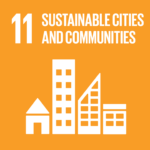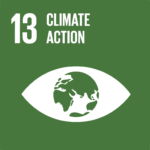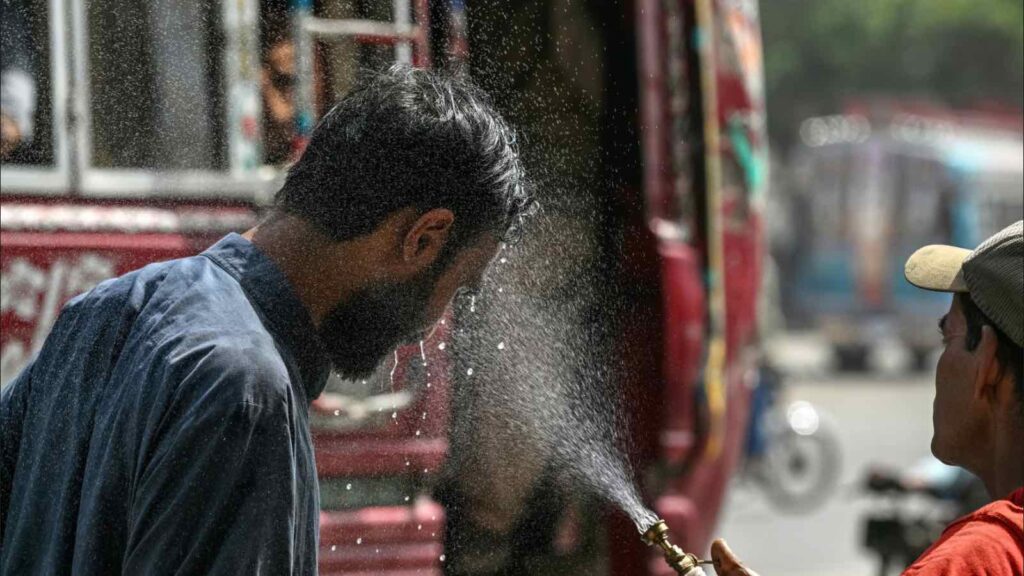A dangerous new normal : temperatures that typically peak in May or June have surged in April, reshaping what was once a predictable seasonal cycle.
South Asia, home to 1.9 billion people, is now grappling with an unprecedented early-season heatwave that experts warn is no longer an anomaly but a frightening glimpse into the accelerating impacts of human-driven climate change. Temperatures that typically peak in May or June have surged in April, reshaping what was once a predictable seasonal cycle.
RELEVANT SUSTAINABLE GOALS



In India, Delhi recorded a searing 40°C in April, five degrees above seasonal norms. Jaipur scorched at 44°C, triggering a surge in heatstroke cases among outdoor workers. Meanwhile, Pakistan’s Sindh province saw temperatures spike to a staggering 50°C, nearly 8.5°C above the average for this time of year. This, say scientists, is the “new normal.”
Climate Change: The Clear Culprit
According to ClimaMeter, a platform monitoring extreme weather, the early and extreme heat bears the unmistakable fingerprint of global warming caused by human activity. Gianmarco Mengaldo, a climate expert at the National University of Singapore, stresses: “These spring heatwaves are not anomalies. They’re signals. We need to move beyond awareness into action.”
The World Meteorological Organization reports that ocean heat content has hit record levels over the past eight years, accelerating warming patterns across the globe. In South Asia, urban heat islands – where cities like Delhi and Islamabad are now up to 3°C hotter than surrounding rural areas – only amplify the crisis.
Indian authorities have issued emergency orders in Delhi, urging schools to halt afternoon sessions, ensuring hydration breaks, and readying rehydration solutions. Yet, experts caution that these reactive measures fall short of what is needed.
David Faranda, a senior climate scientist with the French National Centre for Scientific Research, warns: “Without drastically reducing emissions and building climate resilience through better insulation, green energy, and urban planning, the implications are alarming.”
Pakistan, meanwhile, remains deeply underprepared, as editorials in national outlets like Dawn highlight the chronic lack of infrastructure to cope with escalating climate threats.
Economic Inequality and Infrastructure Gaps
For the poor, the stakes are life and death. Many in South Asia lack access to cooling, clean water, or stable electricity, leaving them dangerously exposed to rising temperatures. Mengaldo notes, “Economic levels play a huge role in how people can cope and sustain themselves.”
While wealthier residents may access air conditioning, vast populations of street vendors, farmers, and construction workers face hours of unrelenting heat without relief. Delhi’s heat action plan now focuses on these vulnerable groups, but implementation remains patchy.
The early arrival of heatwaves and the surpassing of previously unimaginable temperature thresholds are warning signs: “Many of the events predicted for 2050 or 2070 are already happening,” Mengaldo says. “We underestimated the speed of change.”
Both Mengaldo and Faranda emphasize that beyond cutting emissions, adaptation is urgent: smarter architecture, improved materials, and urban design that naturally reduces heat stress must become priorities.
Faranda adds, “If we want to survive the coming decades, we must not only build more renewables but also reduce energy consumption overall: through lifestyle changes, efficient architecture, and better materials.”
The Global Wake-Up Call
South Asia’s extreme heat is not an isolated warning – it is part of a larger global pattern. From the Middle East to Europe, from the rising sea levels to collapsing biodiversity, the signs are multiplying. What was once considered a distant climate future is here, unfolding faster than models predicted.
The world stands at a crossroads: act now, or face a future where extreme heat, water scarcity, and mass displacement become the defining crises of our time.
Lead image courtesy of Asif Hassan/AFP/Getty Images (A volunteer sprays water on a passerby’s face to cool him off on an unusually hot April day in Karachi, Pakistan)




